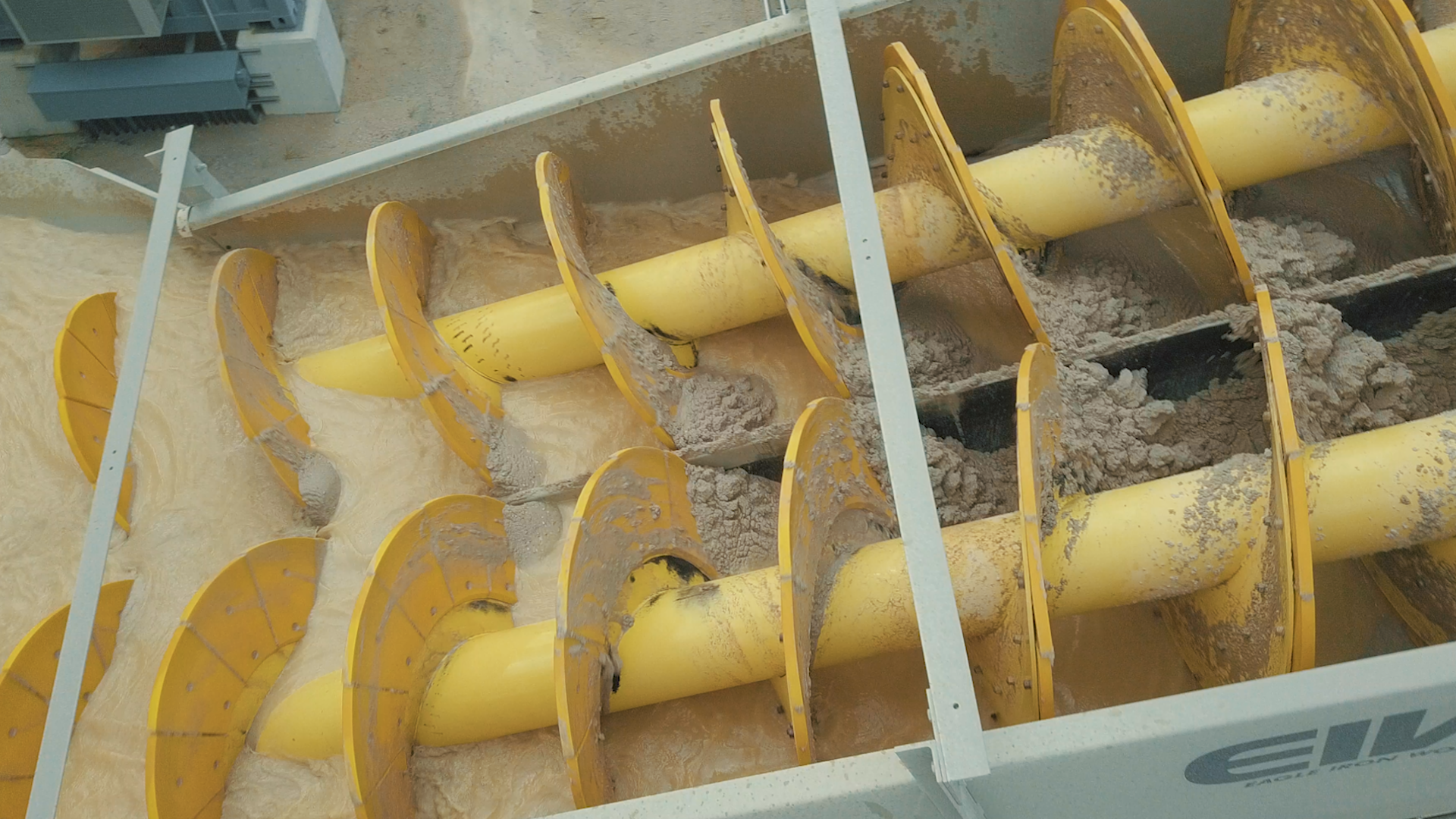
How to Make an Existing Sand Screw More Efficient
Sand screws, also called Fine Material Washers, are a tried and true method for washing, classifying and dewatering sand and other particles less than 3/8”. They’ve earned this distinction for several reasons: they’ve been proven over decades, they’re relatively inexpensive, require far less HP or kW motors and are more forgiving of fluctuating feeds than more sensitive washing processes involving cyclones (though that doesn’t mean you can feed them oversized material).
However, despite their popularity, sand screws can sometimes be regarded as inefficient in that they tend to lose product-sized fines to the overflow, which means valuable product is being sent to the pond or tailings as waste. Periodically sampling the screw overflow will indicate if any product is being sent to waste.
Luckily, there are a few ways to increase the efficiency of your sand screw washing operation without having to invest in additional equipment and without having to break the bank.

Changing the shaft speed
The first way to potentially increase the efficiency of a sand screw is to know the percentage of material passing 50 mesh in the washed sand product discharging from the machine. If the unit’s tub or washer box starts to have a buildup of fine sand, this is an indication that the screw shaft speed is too fast for the fineness of the sand trying to be conveyed to the discharge. This buildup can eventually lead to a “sanding over” of the entire pool area if the screw shaft speed is not reduced.
It should be noted that while a reduction in screw speed will allow fine sand to be conveyed to the discharge, it will also proportionately decrease overall capacity of the unit. For example, if you reduce the screw speed to 75% of full or 100% speed, the capacity will decrease to 75% of the full speed capacity. If you reduce the speed to 50%, the capacity will decrease to 50%, and so on.
The following chart shows the recommended sand screw shaft speeds for most all sizes of Fine Material Washers and the resulting capacities. Keep in mind these speed recommendations are based on the percent of minus 50 mesh in the washed sand product.

Raising or lowering the weirs
The second way to increase the efficiency of a sand screw is to check the positioning of the adjustable weirs on your Fine Material Washer.
Typically, Fine Material Washers feature adjustable weirs in back and along the sides of the pool area. This is to allow the water and silts to have the slowest possible velocity when overflowing the tub. The Fine Material Washer can retain desired fines or overflow excess fines primarily through the setting of the adjustable weirs. Setting all three weirs overflowing at their highest position gives maximum retention of fines.
If more fines are to be overflowed, lowering the back weir will increase the water velocity and carry out additional fines. If desired fines are to be retained, raising all the weirs will decrease the water velocity and retain more product sized fines.
.jpg)
Adding rising current water
If the feed material contains a high percentage of silt, the resulting slurry can be of a high specific gravity that is dependent on the volume of water associated with the solids feed. A higher specific gravity can result in potential retention of undesirable silts. Lowering the specific gravity typically results in the removal of ultra-fines and can be accomplished by adding fresh water into the water manifold under the lower curved plate.
This addition of fresh water improves the classification process by introducing an upward rising current of water that helps to keep the ultra-fines in suspension while the product-sized particles can settle out to be conveyed out of the tub area as product.
Conducting routine service checks and adjustments
As with any piece of equipment, performing regularly scheduled inspections and maintenance is key to optimum operating efficiency. With Fine Material Washers, the following periodic checks to determine that the equipment is operating at an optimum level are recommended:
- Check the V-belt drive for proper belt tension and for worn or frayed belts.
- Check the outboard bearing vent opening relief slot for evidence of water leakage caused primarily by a leaky shaft seal that should be replaced.
- Check the overflow for evidence of an out-of-level condition caused by settling of the machine.
- Check the screw shaft wear shoes for wear and breakage that would reduce operating efficiencies.
- Check for loose bolts anywhere on the machine, supports, drive, wear shoes, shaft drive coupling, etc. possibly caused by vibrations transmitted from other equipment.
- Check the gear reducer for oil level and check the shaft seals for signs of leakage.
- Check the outside diameter (OD) of the washer’s pipe shaft primarily where the feed solids enter the machine. Comparing the OD measurement of the pipe and knowing the original OD can be used to alert you to an excessively worn shaft that should be replaced before it breaks causing a loss of production from the washer.
By making small adjustments to the operation of your screw, along with ensuring a proper maintenance schedule is followed, you can increase the efficiency of your Fine Material Washer to meet or exceed your production goals without needing to invest in new or additional equipment.



